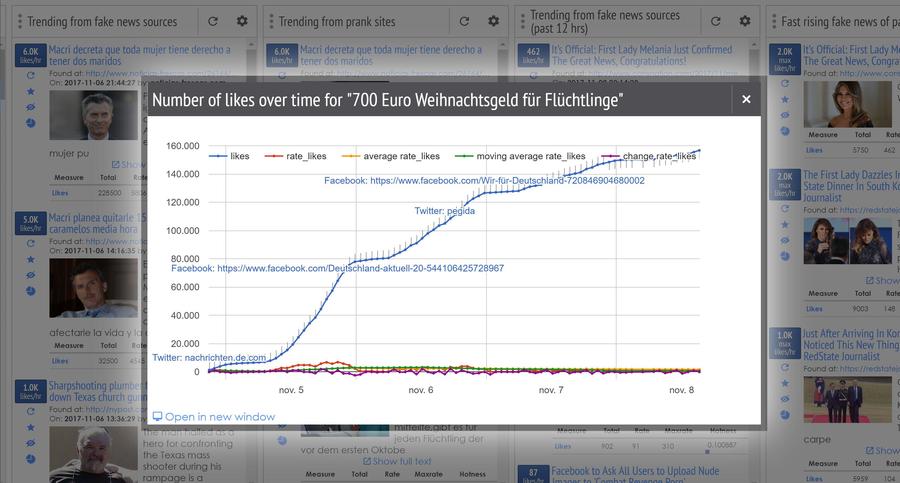Jak pracujeme | Lead Stories
Jak vyhledáváme tvrzení a zprávy pro fact-checking
Lead Stories hledá tvrzení a zprávy k ověření faktů pomocí několika nástrojů a metod. Zde jsou ty nejdůležitější:
- Náš vlastní Trendolizer™ engine
- Google Trends
- Nástroj společnosti ByteDance pro fact-checking a přímé vyhledávání na TikToku.
- poznámky komunity na síti X
- Tipy čtenářů
Trendolizer
Lead Stories vytvořila nástroj Trendolizer™ engine, který monitoruje internet a vyhledává nové trendy. Dokáže měřit míru zapojení (lajky, zhlédnutí, komentáře, retweety a další) u odkazů, obrázků a videí na různých platformách jako Facebook, Twitter, YouTube nebo TikTok a poskytuje nám přehled o tom, jaký obsah se stává virálním.
(screenshot z našeho dashboardu Trendolizer™)
Používáme Trendolizer k monitorování internetu pro virální obsah, ale také sledujeme oblíbený obsah ze specifických webů, které v minulosti zveřejnily nepravdivé informace, spolu s virálním obsahem odpovídajícím klíčovým slovům a frázím spojeným s falešnými narativy nebo konspiračními teoriemi.
Google Trends
Google Trends používáme denně ke kontrole, které vyhledávací dotazy související s frázemi spojenými s ověřováním faktů („fake news", „fact check" apod.) jsou na Googlu populární. To obvykle naznačuje, že lidé hledají odpovědi ohledně konkrétní zprávz , protože pochybují o její pravdivosti
Nástroj společnosti ByteDance pro fact-checking a přímé vyhledávání na TikToku.
Lead Stories je součástí Bytedance partnertsví s nezávislými ověřovateli faktů a díky tomu v některých zemích získává přístup k seznamům obsahu, který byl označen jako potenciální dezinformace (prostřednictvím vlastního nástroje pro ověřovatele faktů poskytnutého společností ByteDance). Pro účely zveřejňování ověřování faktů má Lead Stories svobodu vybírat položky ze seznamu nebo je ignorovat; ByteDance nám neříká, jaký obsah bychom měli zpracovat. Provádíme také přímé vyhledávání na TikToku kolem aktuálních událostí a témat náchylných k dezinformacím, abychom našli virální dezinformace.
Poznámky komunity na síti X
Několik členů našeho týmu je součástí programu Community Notes na síti X, kde uživatelé mohou k příspěvkům přidávat poznámky s kontextem, které se po dostatečném počtu hlasů uživatelů mohou stát veřejnými. Někdy využíváme frontu poznámek čekajících na hlasování jako včasný indikátor nově se objevujících dezinformací, které je potřeba prověřit.
Tipy od čtenářů
Čtenáři nás mohou kdykoli kontaktovat přes naši kontaktní stránku, pokud mají tip na online příběh, který je potenciálně nepravdivý a škodlivý. V praxi dostáváme takových tipů velmi málo, ale rádi bychom jich dostávali více.
Jak vybíráme tvrzení a zprávy pro fact-checking
Každý den hledáme s pomocí těchto nástrojů nejvíce trendující příběhy/videa/příspěvky/... a vybíráme ty, které splňují následující kritéria:
- Obsahují tvrzení, která lze ověřit (tj. ne čisté názory, předpovědi, vágní výroky ani proroctví). Zahrnujeme také tvrzení, která by teoreticky mohla být ověřena při dostupnosti správných důkazů nebo svědků, ale která jsou v praxi velmi obtížně, nebo dokonce nemožná ověřit (citace ze schůzek s uzavřeným přístupem, interní informace apod.).
- Jsou pro někoho škodlivá. Zde chápeme pojem ‚škodlivé' poměrně široce, může zahrnovat cokoliv, kde hrozí riziko: negativních dopadů na zdraví, poškození pověsti, politických rozhodnutí založených na nepřesných informacích, zlehčování nebo přehánění skutečných problémů, emocionálního dopadu falešných příběhů prezentovaných jako pravdivé, pachatelů, kteří profitují z šíření nepravdivých informací, finančních ztrát, zkresleného chápání aktuálních událostí, nesprávného obviňování lidí, použití falešných důkazů k podpoře větších konspiračních teorií..."
- Jsou (pravděpodobně) virální nebo obsahují tvrzení, které v minulosti bylo virální. Nevyužíváme žádné numerické hranice (například musí mít více než x lajků nebo y zhlédnutí), spíše se zaměřujeme na relativní pořadí (například „toto je nejvíce sledované video o této konkrétní konspiraci" nebo „toto je dnes nejpopulárnější vyhledávací dotaz na Googlu týkající se ověřování faktů") a někdy také sledujeme počet míst, kde se tvrzení objevuje (stovky tweetů se stejným obrázkem i jeden tweet s obrázkem a stovkami retweetů jsou oba důvody ke kontrole tohoto obrázku). Abychom určili, které položky jsou „pravděpodobně" virální, sledujeme krátkodobé prudké nárůsty zapojení a velikost publika zdroje, který dané tvrzení vydává nebo šíří (Instagramová stránka s milionem sledujících versus neznámý blog, který téměř nikdo nečte).
- Jsou relevantní pro publikum webu, na kterém zveřejňujeme ověřování faktů, nebo ho ovlivňují. Obecně necháváme vnitropolitické záležitosti, hoaxy a škodlivé dezinformace, které se šíří v jiných jazycích či zemích, na ověřovatelích faktů v těchto zemích, pokud neexistuje místní kontext, nebo se stejná tvrzení nerozšiřují také v zemi či zemích pokrytých některým z našich webů.
Obecně upřednostňujeme příběhy týkající se aktuálních událostí a nové, nikdy předtím neviděné tvrzení, ale občas se věnujeme i starším tvrzením, zejména pokud mají tendenci se periodicky vracet (například staré hoaxové články, které jsou opakovaně přepisovány na nové weby finančně motivovanými spamery, nebo falešné citace přisuzované politikovi, které se objevují vždy, když je tato osoba v médiích)
Při výběru toho, co ověřujeme, nebereme v úvahu politickou zaujatost. Ověřujeme tvrzení, která škodí (nebo prospějí) lidem, příčinám a skupinám napříč celým politickým spektrem.
Občas ověřujeme tvrzení, která pocházejí ze satirických webů nebo jsou satirické povahy, ale pouze v případech, kdy se zdá, že významný počet lidí jim věří jako faktům. Naši politiku týkající se satiry naleznete zde
Tipy od čtenářů hodnotíme podle stejných kritérií uvedených výše: pokud nám jsou zaslána tvrzení, která nelze ověřit, nejsou škodlivá nebo nejsou příliš rozšířená, je velmi malá šance, že se jimi budeme zabývat. Naopak konkrétní, škodlivý a virální příběh upoutá naši pozornost.
Jedním z cílů našeho ověřování faktů je pomoci zastavit nebo zpomalit šíření trendujících nepravdivých informací. To znamená, že zřídka zveřejňujeme ověřování faktů, které potvrzují, že něco je skutečně pravda: pokud se pravda virálně šíří sama, jsme rádi, že ji necháme být
Jak děláme fact-checking tvrzení a zpráv
Metodologie
Každé tvrzení je jiné a ne všechna vyžadují stejný přístup. Obecně se nejprve snažíme tvrzení přeformulovat jako otázku (‚Je pravda, že X?') a naším cílem je poté na tuto otázku poskytnout odpověď spolu s vysvětlením a dostupnými důkazy.
Existují otázky, které si obvykle klademe a snažíme se na ně odpovědět, abychom mohli říct, zda je tvrzení pravdivé nebo ne (i když ne všechny se mohou vztahovat na každou situaci)
- Odkud původně tvrzení pochází a existují důkazy pro tento původ? Pokud se něco poprvé objevilo v fikčním prostředí nebo v satirickém díle, je velmi nepravděpodobné, že je to pravda. V některých případech bohužel není možné najít původní zdroj.
- Pokud je zdroj známý: jaké důkazy uvádí a podporují tato důkazy tvrzení? (Pokud článek tvrdí ‚Nová studie říká X', říká studie skutečně X?)
- Jsou v tvrzení logické nesrovnalosti nebo neopodstatněné závěry a předpoklady ohledně důkazů? (‚Osoba X byla jednou viděna s osobou Y a existuje o tom fotografie, to musí znamenat, že oba jsou zapleteni do složitého spiknutí!')
- Existují jiné možné vysvětlení pro tyto důkazy? (‚Osoba X byla na fotografii při zatýkání osoby Y', ‚Fotografie byla digitálně upravena', ‚Fotografie ve skutečnosti nezobrazuje osoby X nebo Y' ...)
- Pokud zdroj tvrdí, že má interní nebo důvěrné informace, je pravděpodobné nebo možné, že je má? (Mohl by například náhodný člověk na internetu mít přístup k přísně tajným vysoce utajovaným informacím CIA? Pokud ano: jak a proč takový bezpečnostní průšvih není větším příběhem?)
- Jsou důkazy z důvěryhodných oficiálních nebo renomovaných vědeckých zdrojů (nebo zda takové důkazy vůbec existují)? Obvykle hledáme oficiální statistiky s ověřenou metodologií, které byly shromážděny za delší časové období, a vědecké články recenzované odborníky, zejména o dvojitě zaslepených studiích s velkými vzorky. Pre-printy, neověřené studie, tiskové zprávy bez odkazu na celou studii, výsledky průzkumů, studie s velmi malými vzorky, publikace zvláštních zájmových skupin a podobně mají mnohem menší hodnotu jako důkaz či podpora tvrzení.
- Lze kontaktovat osoby uvedené jako ti, kdo činí tvrzení v příběhu (nebo jsou uvedeni v těchto tvrzeních) pro komentář? To bohužel není vždy možné: nemusí být k dispozici žádné kontaktní údaje, mohou používat pseudonym nebo mohou být obtížně dostupní. Také mohou nastat případy, kdy bezpečnostní či jiné oprávněné důvody brání pokusu o kontakt. S výjimkou těchto situací se o kontaktování přesto pokusíme, pokud je to důležité pro ověření pravdivosti tvrzení. Pokud v přiměřené lhůtě nedostaneme odpověď a zároveň máme dostatek důkazů z jiných zdrojů, vyhrazujeme si právo ověřování faktů zveřejnit, přičemž ponecháváme možnost později odpověď doplnit.
- Existují odborníci nebo místní zdroje, kteří mohou tvrzení potvrdit nebo vyvrátit? Při citování expertů nebo zdrojů dáváme přednost těm, kteří jsou pojmenovaní a mají zveřejněné afiliace a kvalifikace, a také raději nekončíme u jen u nich, ale pokud je to možné, hledáme další ověřitelné důkazy.
- Ukazuje technická analýza zdroje a/nebo důkazů důkazy o údajném zásahu, úpravách nebo manipulaci?
- Souhlasí tvrzení nebo důkaz s evidencí/záznamem? (‚Skutečně tato citace zazněla v tomto zaznamenaném rozhovoru?', ‚Byla tato fotografie skutečně pořízena dne X na místě Y?'
- Má tvrzení zmatený nebo matoucí charakter - záměrně či ne? (Téměř o každém soudci, policistovi nebo vězeňském dozorce na světě lze říct, že měl ‚kontakty s známými zločinci', a téměř každý hasič ‚byl na místě podezřelého požáru s sekerou', to však neznamená, že jsou zlí nebo že se tam dělo něco zlého.)
- Můžeme najít důkazy z primárních zdrojů (pokud možno více než jeden, tam kde je to možné či relevantní)? Tedy místo článku o dokumentu nebo zveřejněném rozhovoru s osobou dáváme přednost samotnému dokumentu nebo pokud možno přímému komentáři od dané osoby.
Naším cílem je sloužit našim čtenářům tím, že co nejrychleji zveřejníme článek, který spolehlivě dokazuje pravdivost nebo nepravdivost tvrzení. To znamená, že obvykle publikujeme, jakmile shromáždíme dostatek informací k sebejistému závěru, ale někdy pokračujeme v aktualizaci příběhu, zatímco sbíráme další podpůrné důkazy nebo když nám odpovídají zdroje (více expertů/zdrojů se ozývá zpět, vyřizují se žádosti o informace podle FOIA apod.)
Všechny naše články jsou před zveřejněním zkontrolovány alespoň třemi lidmi (autorem a minimálně dvěma redaktory).
V (naštěstí vzácném) případě, kdy se naše počáteční zhodnocení ukáže jako chybné nebo když nové důkazy vyžadují změny závěru, aktualizujeme příběh v souladu s naší Politika Oprav.
Vezměte prosím na vědomí, že v některých případech není možné tvrzení ani potvrdit, ani vyvrátit, jednoduše proto, že nejsou dostupné žádné kvalitní důkazy. V takových případech upozorníme na to, že jsme nenašli žádné důkazy pro ani proti tvrzení, a že osoba nebo web, který původní tvrzení vznesl, tak činí bez poskytnutí jakéhokoli důkazu. Také vysvětlíme, jak a kde jsme důkazy hledali.
Nadpisy, popisky pod miniaturami, struktura článku a naše (absence) hodnotící škály
Všechny naše články obvykle mají stejnou strukturu, která umožňuje snadné čtení a zabraňuje neúmyslnému šíření nepravdivých informací.
Víme, že mnoho lidí vidí pouze naše nadpisy a miniatury obrázků na sociálních sítích a že drtivá většina lidí, kteří uvidí příspěvek na sociálních médiích, na něj neklikne, aby si přečetli celý článek. Z těch, kteří kliknou, pak mnoho čte jen první odstavec.
Proto se snažíme do nadpisu, miniatury obrázku a prvního odstavce dát co nejvíce informací.
Titulek
Obecně se snažíme mít v nadpisu tvrzení, které ověřujeme, ale s přidáním slov ‚Fact Check:' a slova psaného velkými písmeny, které popírá význam (když tvrzení není pravdivé).
Například: ‚Toto je jablko' se změní na ‚Fact Check: Toto NENÍ jablko'.
Pokud má původní virální článek nebo video, které ověřujeme, dané tvrzení v nadpisu, snažíme se co nejvíce držet formulace tohoto nadpisu, aby bylo pro lidi snazší najít náš článek při hledání tohoto nadpisu pomocí vyhledávačů.
Pokud původní nadpis neobsahuje tvrzení, které ověřujeme, držíme se v našem vlastním nadpisu přímo toho tvrzení. Například pokud původní nadpis zní ‚Svět šokován osobou X' a článek pak popisuje něco, co X ve skutečnosti neudělal, náš nadpis by byl ‚Fact Check: X NEUDĚLAL Y' místo ‚Fact Check: Svět NEŠOKOVÁN osobou X'.
Vezměte prosím na vědomí, že také automaticky negujeme každý titulek nebo tvrzení, ale někdy je nemožné dokázat opak nebo negovaný nadpis má jiný význam než ten, který chceme vyjádřit. Pokud je tvrzení ‚X zabil Y' a jednoduše neexistují žádné důkazy ani pro, ani proti tomu, že by to X udělal, nebylo by správné říct ‚X NEZABIL Y'. V takových případech bychom použili formulaci jako ‚ŽÁDNÉ důkazy, že X zabil Y'.
A když titulek zní ‚X způsobuje Y podle vědců' a ukáže se, že vědci to ve skutečnosti neřekli, náš titulek by pravděpodobně byl něco jako ‚Vědci NEŘEKLI, že X způsobuje Y' místo ‚X NEZPŮSOBUJE Y podle vědců'.
Někdy může být potřeba použít více negací, aby se plně vysvětlilo, co se děje: ‚Ověření faktů: X NEBYL zatčen za to, že udělal Y' by stále naznačovalo, že X Y udělal (ale vyváznul bez trestu), takže pokud je X nevinný, nadpis by byl ‚Fact Check: X NEBYL zatčen; NEUDĚLAL Y'.
Cílem našich titulků je okamžitě sdělit čtenářům závěr fact checkingu, aby i když si nepřečtou zbytek článku, nebyli vystaveni nepravdivým nebo zavádějícím informacím. To je také důvod, proč nepoužíváme nadpisy ve formě otázek. Když někdo vidí jen ‚Fact Check: Zabil X Y?', může se mu to stále usadit v podvědomí, že X možná skutečně byl vrahem Y, nebo že se o tom kladou otázky.
Popisky miniatur (náhledových obrázků)
Naše články vždy obsahují snímek obrazovky původního příspěvku/článku/webové stránky/tweetu/videa, které obsahovalo dané tvrzení (nebo alespoň jeho reprezentativní ukázku). Tento snímek obrazovky má přeponovaný popisek, který může obsahovat maximálně čtrnáct znaků. Tento obrázek s popiskem je také náhledový obrázek (thumbnail), když se naše příběhy sdílí na sociálních sítích
Od jara roku 2020 žádáme naše autory, aby do popisku už neuváděli shrnutí závěru ověření faktů, protože tato informace by již měla být v nadpisu. Proto byste u novějších článků neměli najít slova jako:
- Nepravdivý
- Zavádějící
- Není Pravda
- Falešný
- Hoax
- ...
Místo toho žádáme naše autory, aby tam shrnuli a zjednodušili odůvodnění závěru jedním až třemi slovy.
Proč je s tím tvrzením problém? Proč X NENÍ Y?
Několik dobrých příkladů, co může být v popisku, zahrnuje:
- "Zastaralá čísla"
- "Photoshop"
- "Chybějící informace"
- "Stále žije"
- "Scam"
- "Pouze vtip"
- "Zpomalené video"
- ...
Zde je příklad pro hypotetický příspěvek s nadpisem ‚Fact Check: Toto NENÍ jablko':
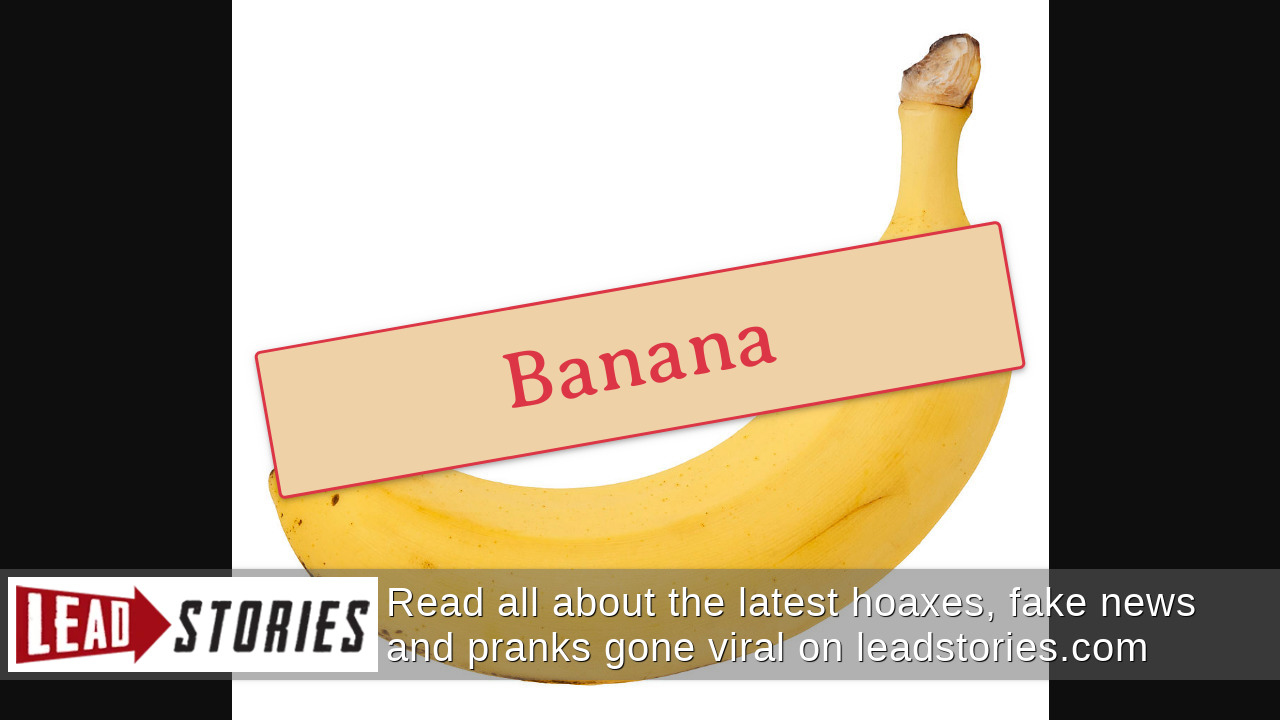
Proč toto není jablko? Protože je to banán!
Struktura článku
Všechny nasš články mají stejnou základní strukturu:
- Titulek, který začíná "Fact Check:" a ihned obsahuje závěr ověření faktů ("X NEdělal Y")
- Úvodní odstavec, který začíná tvrzením jako otázkou, následovanou přímo odpovědí a shrnutím důvodu v pár větách pro tuto odpověď. („Udělalo X Y? Ne, to není pravda. Video ukazuje, že Y byl na jiném místě, když se X stalo, a místní policie to potvrdila."
- Odkaz na nejstarší verzi tvrzení nebo na reprezentativní příklad příspěvku, který toto tvrzení uvádí, následovaný krátkým výňatkem nebo screenshotem. („Tvrzení se objevilo v článku na webu X, publikovaném dne Y, s názvem Z. Příběh začínal...")
- Podrobná kontrola faktů, která uvádí veškeré a důvody a důkazy. Naším cílem je poskytnout odkazy na veškeré relevantní informace, aby si čtenáři mohli ověření faktů provést sami („Zde je vložené bezpečnostní video... Policie uvádí... Mluvili jsme s..."
- Pokud je kontrola faktů zaměřena na tvrzení zveřejněné na webu nebo stránce, kterou jsme v minulosti opakovaně ověřovali, nebo na téma, o kterém jsme již psali, můžeme také uvést další informace o této problematice + odkazy na předchozí ověřování faktů („O webu reallyreliabletotallynotfakesite.com jsme psali dříve, provozují ho spammeři, kteří...")
Klíčové zásady, o jeijichž dodržování žádáme naše autory:
- Vždy poskytněte odkazy na původní příběh nebo zdroj, aby si naši čtenáři mohli ověřit, že správně přebíráme to, co je tam uvedeno.
- Všechny odkazy na informace, které jsou důležité pro prokázání nebo vyvrácení tvrzení, by měly být zálohovány na archive.org a záložní odkazy by měly být uvedeny v příběhu. Například, pokud článek odkazuje na zprávu, měl by být odkaz uveden takto: ‚jak můžete číst v této zprávě (archivováno zde)'.
- Při ověřování, zda číslo v debatě o kontrole zbraní (nebo o ukončení těhotenství, jaderné energii či jakémkoli kontroverzním tématu) opravdu odpovídá x %, není třeba zahrnovat citace od lidí nebo skupin vysvětlujících, proč je to dobré nebo špatné, nebo kolik by to mělo být, případně kolik to historicky bylo a proč to bylo lepší nebo horší. Lidé, kteří chtějí vědět, zda je něco dobré nebo špatné, si o tom mohou přečíst na jiných stránkách nebo v sekcích názorů. Ti, kdo chtějí znát aktuální zprávy nebo kompletní historii tématu, mohou zkontrolovat Google News nebo Wikipedii. Naše stránka je zde pro ty, kdo chtějí jen vědět, zda je něco pravda nebo ne.
- Pokud tvrzení obsahuje informace citlivé na soukromí (jména, fotografie, kontaktní údaje...), zejména pokud jde o nezletilé, je třeba dbát na to, aby byly zahrnuty pouze ty informace, které jsou nezbytné pro prokázání pravdivosti nebo nepravdivosti tvrzení, a aby byly skryty nebo zneviditelněny ty osobní údaje citlivé na soukromí, které nejsou relevantní.
Žádná standardizovaná hodnotící škála
Lead Stories nepoužívá standardizovanou škálu hodnocení nebo skóre k hodnocení tvrzení na našem webu. Když ověřujeme nepravdivé nebo zavádějící tvrzení, naším cílem je jednoduše vysvětlit, co je na něm přesně špatně a proč. Snahou přidávat také skóre, hodnocení, číslo nebo standardizovaný popis přesně toho, jak moc je tvrzení nesprávné, bychom jen zmátli čtenáře. Jaký je rozdíl mezi „napůl špatné", „částečně pravdivé" nebo „smíšené"? Je tvrzení, které je z 72% nepravdivé, opravdu o tolik horší než to, které je ze 28% pravdivé? Jsou pět „TruthPoints" opravdu lepší než čtyři a co vlastně znamená ten jeden bod rozdílu?
Většina našich čtenářů takovéto rozdíly neřeší nebo na ně nemá čas.
Jen chtějí vědět, jestli je to tvrzení, který viděli na internetu, pravdivé, nebo ne. Proto se snažíme jim to co nejlépe sdělit.
About us


Lead Stories is a U.S. based fact checking website that is always looking for the latest false, misleading, deceptive or
inaccurate stories, videos or images going viral on the internet.
Spotted something? Let us know!.
Lead Stories is a:
- Verified signatory of the IFCN Code of Principles
- Facebook Third-Party Fact-Checking Partner
- Member of the #CoronavirusFacts Alliance
Follow us on social media
Most Read
Most Recent
-
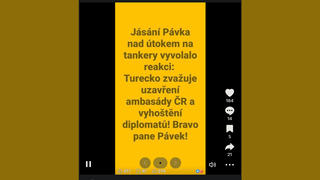
-

Fact Check: Prezident Pavel NEZDRŽUJE vytvoření nového kabinetu, pověřil vítěze voleb sestavením vlády
Fact Check
-

Fact Check: Prezident NEMÁ tři pokusy jmenovat premiéra sám; napotřetí někoho navrhuje předseda sněmovny
Fact Check
-
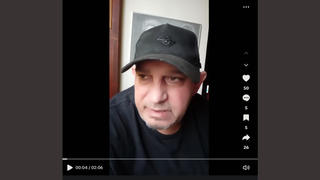
Fact Check: Příručka 72 hodin ministerstva vnitra pro veřejnost NESTÁLA sto miliónů korun, ale jen pětinu této sumy
Fact Check
-
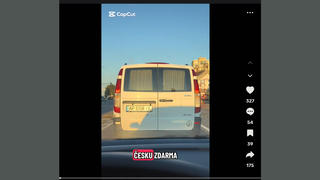
Fact Check: Provozovatelé aut s ukrajinskou poznávací značkou, dlouhodobě žijící v ČR JSOU dohledatelní pro doručení pokut
Fact Check
-

Fact Check: Růst inflace v České republice v roce 2022 NEZPUSOBILA zelená politika EU -- šlo především o dopady války na Ukrajině
Fact Check
-
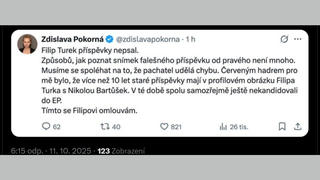
Fact Check: Novinářka Deníku N se na sociálních sítích NEOMLUVILA za článek, který odhalil urážlivé posty připisované Filipu Turkovi
Fact Check

